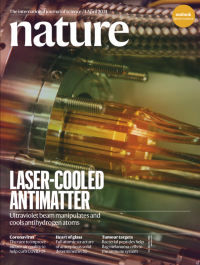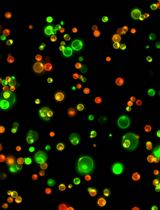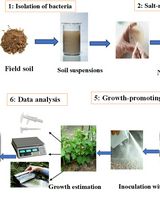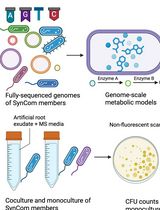- EN - English
- CN - 中文
Bacterial Infection and Hypersensitive Response Assays in Arabidopsis-Pseudomonas syringae Pathosystem
拟南芥-丁香假单胞菌病理系统中的细菌感染和超敏反应测定
发布: 2021年12月20日第11卷第24期 DOI: 10.21769/BioProtoc.4268 浏览次数: 4858
评审: Andrea PuharGang YuShweta Panchal
Abstract
Arabidopsis thaliana-Pseudomonas syringae pathosystem has been used as an important model system for studying plant-microbe interactions, leading to many milestones and breakthroughs in the understanding of plant immune system and pathogenesis mechanisms. Bacterial infection and plant disease assessment are key experiments in the studies of plant-pathogen interactions. The hypersensitive response (HR), which is characterized by rapid cell death and tissue collapse after inoculation with a high dose of bacteria, is a hallmark response of plant effector-triggered immunity (ETI), one layer of plant immunity triggered by recognition of pathogen-derived effector proteins. Here, we present a detailed protocol for bacterial disease and hypersensitive response assays applicable to studies of Pseudomonas syringae interaction with various plant species such as Arabidopsis, Nicotiana benthamiana, and tomato.
Background
Pseudomonas syringae is a Gram-negative phytopathogenic bacterial species that causes diseases on a broad host range, namely bacterial speck in tomato and canker disease in pepper and kiwifruit (Lewis Ivey and Miller, 2000; Basim et al., 2004; Mazzaglia et al., 2012; Xin and He, 2013). Over the last two decades, Pseudomonas syringae has also been an important model pathogen for studying bacterial ecology, pathogenesis mechanisms, and plant immune system (Xin et al., 2018). Due to its importance in basic biology research, as wells as in outbreaks of economically-important diseases, it was selected as the number one of the top 10 plant pathogenic bacteria in molecular plant pathology (Mansfield et al., 2012).
P. syringae bacteria are generally used as foliar pathogens in laboratories, although in nature they cause diseases in various organs. P. syringae enters plant leaf tissue through wounds or open stomata during natural infections, and uptakes nutrients in the apoplastic space of the leaves for multiplication (Xin and He, 2013). Bacterial disease assays are powerful tools in plant pathology studies. Two inoculation approaches, surface inoculation (i.e., by dipping or spray) and infiltration (i.e., by a needle-less syringe or vacuum), are commonly used in laboratories (Katagiri et al., 2002). Here we present step-by-step procedures for bacterial disease assays by syringe infiltration, which bypasses pathogen entry through stomata and plant “stomatal defense”, and is broadly used in studying plant “apoplast defense”. In addition, we also describe detailed procedures of the hypersensitive response assay, in which recognition of pathogen effectors by plant immune receptors triggers fast tissue cell death, and the rate of cell death can be used as a readout of the strength of plant immunity. Although this protocol is presented using the Arabidopsis-P. syringae pathosystem, it can be easily adapted to different pathosystems, such as Nicotiana benthamiana-P. syringae and tomato-P. syringae with slight modifications on bacterial inoculum.
Materials and Reagents
Eppendorf tubes (1.5ml and 2 ml, Thermo Fisher Scientific, catalog number: 509-GRD-Q and 508-GRD-Q)
0.22 μm Millex-GP Syringe Filter (Merck, catalog number: SLGPR33RB)
96-well plate (200 μl, Round Bottom, Beyotime, catalog number: FPT016)
Paper towels
Pipette tips (Thermo Fisher Scientific QSP, catalog number:112NXL-Q)
1 ml needleless syringe (LABSTAR, catalog number: BX150)
Arabidopsis thaliana accession Col-0, fec (Gimenez- Ibanez et al., 2009) and rps2 (Mindrinos et al., 1994)
Note: Arabidopsis Col-0 plant contains the RPS2 gene, which mediates the recognition of effector protein AvrRpt2 and induces plant ETI resistance to Pst DC3000(avrRpt2). fls2 efr cerk1 (fec) triple mutant, which is mutated in three major pattern-recognition receptor genes; rps2 mutant is mutated in the RPS2 gene, encoding the receptor recognizing AvRpt2.
Pseudomonas syringae pv. tomato (Pst) DC3000 and Pst DC3000(avrRpt2) (Mudgett et al., 1999)
Sodium hypochlorite (Sinopharm Chemical Reagent, catalog number: 80010428)
Sterilized water (e.g., Milli-Q)
Mixed soil, which contains substrate (PINDSTRUP), vermiculite (Size: 1-3 mm) and perlite (Size: 3-5 mm), the ratio of these materials is 3:9:1 in mixed soil.
Tryptone (OXOID, catalog number: LP0042B)
Yeast Extract Powder (OXOID, catalog number: LP0021B)
Potassium dihydrogen phosphate (KH2PO4) (Sinopharm Chemical Reagent, catalog number: 10017608)
Sodium chloride (NaCl) (Sinopharm Chemical Reagent, catalog number: 10019318)
Magnesium sulfate (MgSO4) (Sinopharm Chemical Reagent, catalog number: 20025117)
Agar powder (Shanghai DingGuo Biotech, catalog number: DH010-1.1)
Rifampicin (Yeasen Biotechnology, catalog number: 60234ES08)
Spectinomycin (Sangon Biotech, catalog number: A600901-0005)
75% ethanol (Sinopharm Chemical Reagent, catalog number: 80176965)
Luria-Marine (LM) solid medium (see Recipes)
Rifampicin stock stock (50 g/L, 1,000×) (see Recipes)
Spectinomycin stock stock (50 g/L, 1,000×) (see Recipes)
Equipment
Ultra-low temperature freezer (-75°C freezer, New Brunswick Scientific)
Tray (size: 310 g), transparent plastic dome, pot (size: 8 cm) and mesh (pore size: mesh 18 = 880 μm)
Arabidopsis growth chamber (Percival and JIUPU)
Pipette (1 ml, Rainin, model: L-1000PL for export)
Centrifuge (Eppendorf, model: 5425R)
Spectrophotometer (Thermo Fisher Scientific, model: NanoDrop ONEC)
Steel ball (5 mm in diameter; SSCB, catalog number: KH000268)
Millex-GP Syringe Filter Unit (Merck, catalog number: SLGPR33RB)
Camera (Canon, model: EOS 80D)
Vortex Oscillator (Scientific Industries, model: Vortex-Genie 2)
Tweezer
Beaker (Thermo Scientific, catalog number: 1201-1234)
Cork borer (Sigma-Aldrich, catalog number: Z165220-1SET, 7.5 mm in diameter)
TissueLyser (Shanghai Jingxin Industry, model: Tissuelyser-48)
Stereoscope (Leica, model: MDG41)
Autoclave
Temperature and Humidity Data Logger (Easylog, model: EL-21CFR-2-LCD)
Software
Microsoft Excel
GraphPad Prism 8
Procedure
文章信息
版权信息
© 2021 The Authors; exclusive licensee Bio-protocol LLC.
如何引用
Yuan, M. and Xin, X. F. (2021). Bacterial Infection and Hypersensitive Response Assays in Arabidopsis-Pseudomonas syringae Pathosystem. Bio-protocol 11(24): e4268. DOI: 10.21769/BioProtoc.4268.
分类
植物科学 > 植物免疫 > 宿主-细菌相互作用
微生物学 > 病原体检测
生物科学 > 微生物学
您对这篇实验方法有问题吗?
在此处发布您的问题,我们将邀请本文作者来回答。同时,我们会将您的问题发布到Bio-protocol Exchange,以便寻求社区成员的帮助。
提问指南
+ 问题描述
写下详细的问题描述,包括所有有助于他人回答您问题的信息(例如实验过程、条件和相关图像等)。
Share
Bluesky
X
Copy link












